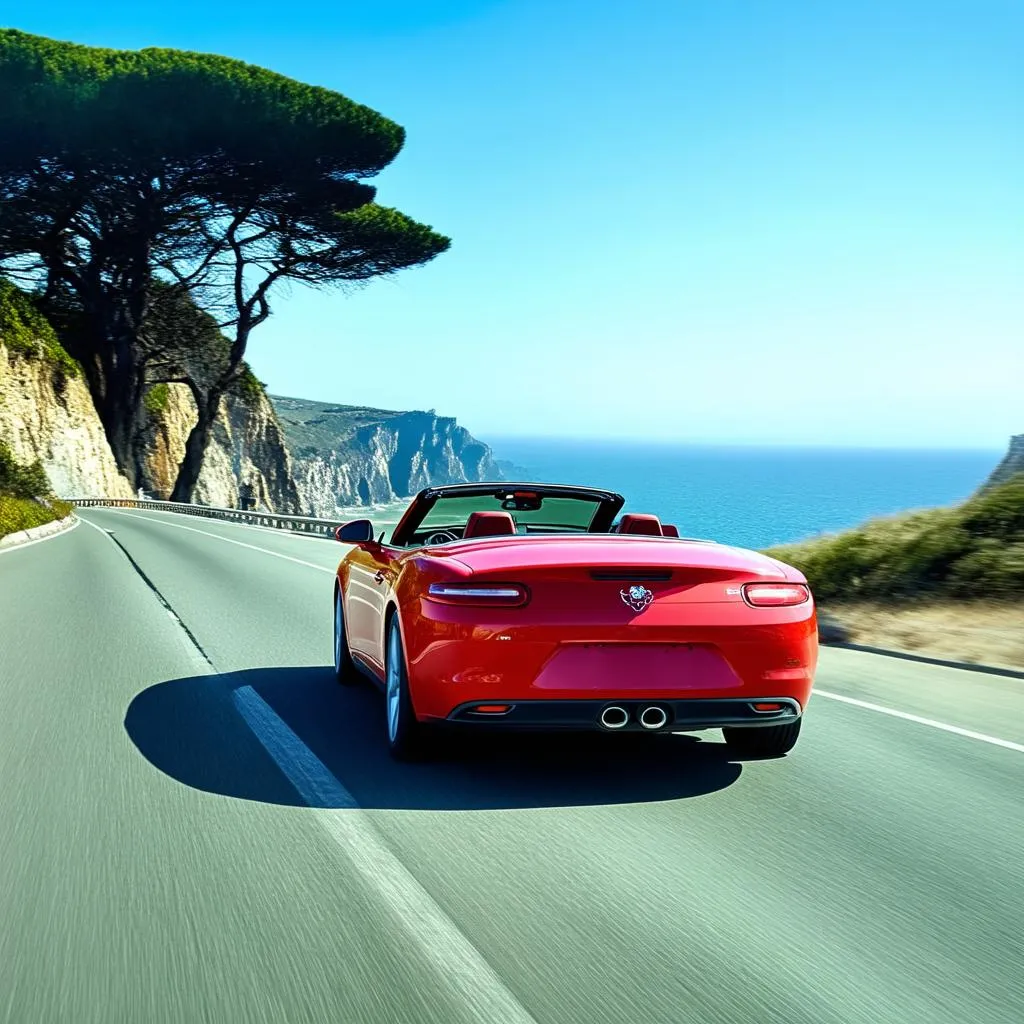Have you ever felt a rush of adrenaline as your car smoothly glided along a winding mountain road, the landscape a blur of vibrant colors? Or perhaps you’ve felt a slight pull as you navigated a roundabout in a bustling city center? These experiences, both exhilarating and commonplace, are governed by the fascinating physics of circular motion, specifically, the dynamics of a car traveling along a horizontal circular curve road.
Understanding the Forces at Play
When a car travels along a straight path, inertia wants to keep it moving in that straight line. However, on a curved road, the car’s direction constantly changes, requiring a force to counteract inertia and guide it along the curve. This force, known as centripetal force, acts towards the center of the circle, perpendicular to the car’s velocity.
Friction: The Unsung Hero of the Road
But where does this centripetal force come from? The answer lies in the friction between your tires and the road surface. As your tires grip the asphalt, they generate a force that points inwards, towards the center of the curve, providing the necessary centripetal force.
Imagine driving along the iconic Pacific Coast Highway, the rugged California coastline stretching out beside you. Each bend in the road, each sweeping curve, relies on this invisible force of friction to keep your car safely on track.
The Impact of Speed and Radius
The amount of centripetal force required depends on two key factors: the car’s speed and the radius of the curve.
Speed: As your speed increases, the required centripetal force also increases. Think about navigating a sharp turn on a city street versus a gentle curve on a highway. The higher speed on the highway necessitates a greater inward force to maintain the circular path.
Radius: Curves with a smaller radius require a larger centripetal force compared to those with a larger radius. Imagine driving along Lombard Street in San Francisco, renowned for its tight hairpin turns. The small radius of these curves demands a significant centripetal force, making it a slow and cautious drive.
Finding the Balance: Avoiding Skids and Spins
If the frictional force is insufficient to provide the necessary centripetal force, the car will lose traction and skid outwards, away from the center of the curve. This loss of control can be particularly dangerous on icy or wet roads where friction is reduced.
“Maintaining a safe speed, especially when navigating curves, is crucial for a safe and enjoyable driving experience,” advises Dr. Sarah Williams, a renowned automotive engineer and author of “The Physics of Driving.” “Remember, exceeding the limits of friction can have serious consequences.”
 Winding mountain road
Winding mountain road
Practical Tips for Navigating Curves
- Reduce speed before entering a curve. This gives you more time to react and reduces the required centripetal force.
- Maintain a steady speed throughout the curve. Avoid braking or accelerating abruptly, as this can upset the car’s balance.
- Look ahead and anticipate curves. This allows you to adjust your speed and position accordingly.
- Be aware of road conditions. Wet or icy roads significantly reduce friction, requiring even lower speeds.
 Car on Pacific Coast Highway
Car on Pacific Coast Highway
The Thrill of the Curve: A Sensory Experience
Beyond the physics, driving on a curved road can be a thrilling sensory experience. The gentle lean of the car, the shifting landscape outside your window, and the feeling of being pushed against your seat all contribute to a sense of speed and exhilaration.
Whether it’s the hair-raising curves of the Stelvio Pass in Italy or the scenic coastal drives along the Great Ocean Road in Australia, navigating curves is an integral part of the joy of driving, offering a unique perspective on the world around us.
Want to learn more about the forces that influence your vehicle on the road? Check out our article on how trucks handle curves: [link to https://travelcar.edu.vn/a-truck-is-traveling-along-the-horizontal-circular/ using relevant anchor text like “truck dynamics on curves”]
Do you have any exhilarating or memorable experiences driving on curved roads? Share your stories in the comments below!